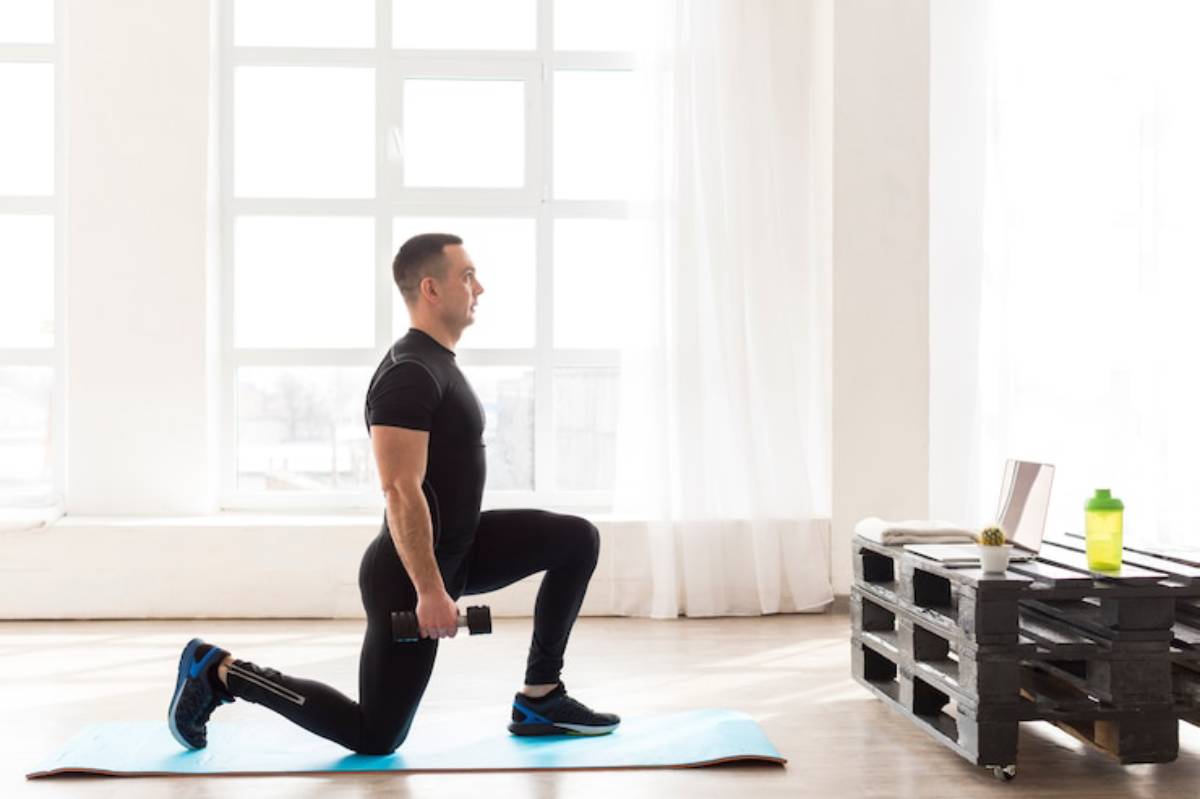
Using Time Under Tension for Bodyweight Growth
The Secret Ingredient You Might Be Missing
Picture this: you’re grinding through endless push-ups, planks, and squats, yet your muscles just aren’t growing the way you hoped. Sound familiar? Many people diving into bodyweight training hit this exact wall. The truth is, simply moving through reps isn’t enough to spark serious muscle development. You need a smarter approach — and that’s where Time Under Tension (TUT) steps in.
In this blog, we’re diving deep into bodyweight TUT training, a proven method for achieving muscle hypertrophy with bodyweight exercises. Whether you’re training at home, at the park, or on the beach, understanding how to manipulate slow tempo exercises can transform your results. Ready to unlock your next level of strength and growth? Let’s get into it!
What is Time Under Tension (TUT)?
Time Under Tension refers to how long your muscles are actively working during a set. Instead of focusing purely on the number of reps, you focus on the total time your muscles stay under strain.
- Example: Instead of banging out 20 fast squats, you might perform 10 squats where each rep takes 6 seconds — 3 seconds down, 1-second pause, 2 seconds up.
Why does this matter? Because muscle growth (also called hypertrophy) thrives under sustained tension. According to the Journal of Strength and Conditioning Research, longer TUT can significantly boost muscle fibre recruitment, leading to greater strength and size over time.
Why TUT is Essential for Bodyweight Strength Training
When you’re lifting heavy barbells, progressive overload is relatively straightforward: just add more weight. But when it comes to bodyweight-only training, progressive overload needs to happen in more creative ways.
Increasing Time Under Tension is one of the most effective methods.
Here’s why:

- Greater muscle fatigue: Longer sets push muscles past their comfort zones.
- Enhanced mind-muscle connection: Slower movements force better control and focus.
- Improved form and injury prevention: Reducing momentum keeps movements strict and safe.
- Accessibility: You can adjust the tempo immediately; no fancy equipment is required!
Bodyweight TUT training lets you continuously challenge yourself without needing heavier loads — perfect for home strength gains and remote training enthusiasts.
How to Apply TUT to Bodyweight Exercises
You might be wondering, “Okay, how do I actually apply this?” Great question. It’s simpler than you think.
Control Every Phase of the Movement
Every exercise has three phases:
- Eccentric (lowering) — like lowering into a squat.
- Isometric (pause) — holding the bottom position.
- Concentric (lifting) — pushing back up.
Slow down the eccentric and concentric phases, and add an isometric hold.
Here’s a breakdown:
- Eccentric phase: 3–5 seconds
- Isometric hold: 1–2 seconds
- Concentric phase: 2–3 seconds
Use Slow Tempo Exercises
Some prime examples for bodyweight TUT:

- Push-ups: Lower for 4 seconds, hold for 2 seconds, push up for 3 seconds.
- Squats: Sink down for 5 seconds, pause at the bottom for 2 seconds, rise for 2 seconds.
- Pull-ups: Lower slowly for 5 seconds, brief hold, then pull up steadily.
- Planks: Instead of racing against the clock, squeeze your muscles intensely throughout.
It’s not about rushing through reps — it’s about feeling every inch of the movement.
Building a Bodyweight TUT Progression Plan
Consistency and progression are key. Here’s how to structure a bodyweight progression plan using TUT principles:
1. Set Your Tempo Goals
Pick a consistent tempo to follow. For beginners, a good starting point might be:
- 3-1-3 tempo (3 seconds down, 1-second pause, 3 seconds up).
As you advance, challenge yourself with:
- 5-2-3 tempo or even slower!
2. Reduce Reps, Increase Quality
You don’t need 50 reps. You might only need 8-12 high-tension reps per set. Focus on perfect control rather than volume.
3. Gradually Increase TUT
Each week, aim to either:
- Extend your time per rep slightly.
- Add an extra rep at the same slow tempo.
- Introduce longer pauses during the isometric phase.
This way, you ensure progressive overload with bodyweight safely and effectively.
4. Rotate Focused Exercises
Don’t get stuck doing only push-ups.
Mix in:

- Bulgarian split squats
- Hollow body holds
- Archer push-ups
- Wall sits
- Single-leg glute bridges
Variety ensures you hit different muscle groups and avoid plateaus.
Real-Life Example: How TUT Transformed My Bodyweight Training
A few years ago, I hit a wall with my home workouts. I was doing hundreds of push-ups and squats, but saw minimal changes. My joints ached, and my motivation dipped.
Then, a coach suggested focusing on Time Under Tension.
I switched to slow tempo sets — taking 5 seconds to lower into a squat, pausing for 2 seconds, and standing slowly.
Within 8 weeks:
- My legs felt stronger and looked visibly firmer.
- My push-up strength increased massively (I could hold a pause at the bottom for 10+ seconds!).
- I felt far less joint pain, thanks to improved control and form.
Honestly, it felt like unlocking a cheat code for home fitness.
Common Mistakes to Avoid with TUT Training
TUT is powerful, but it’s easy to go wrong if you’re not careful. Watch out for these common errors:
1. Letting Form Slip
Slowing down movements can expose weak points. Stay sharp. Prioritise quality over quantity always.
2. Skimping on Tension
Mindless movement defeats the purpose. Keep your muscles engaged every second, even during “rests.”
3. Not Tracking Progress
If you’re not noting your tempo, reps, and time, it’s hard to see improvements. Use a simple notebook or an app.
Advanced Techniques for Serious Growth
Once you’ve nailed the basics, spice things up with these methods:
- Mechanical Drop Sets: Change exercise variations mid-set (e.g., start with archer push-ups, drop to standard push-ups).
- Pause Reps: Add multiple pauses within a single rep.
- One-and-a-Half Reps: Lower fully, rise halfway, lower again, then rise fully — brutal, but effective!
These techniques help break plateaus and keep your muscle hypertrophy and bodyweight journey exciting.
Quick Sample Bodyweight TUT Workout
Here’s a beginner-friendly sample workout using slow-tempo exercises:
| Exercise | Tempo | Sets x Reps |
| Slow Push-ups | 5-2-3 | 3 x 8 |
| Bulgarian Split Squats | 5-1-3 | 3 x 8 per leg |
| Hollow Body Hold | 30 seconds | 3 sets |
| Wall Sit | 45 seconds | 3 sets |
| Slow Negative Pull-ups | 6 seconds down | 3 x 5 |
Rest 60–90 seconds between sets.
Conclusion: Turn Every Rep into an Opportunity
Time Under Tension is a game-changer for bodyweight athletes. Instead of chasing endless reps or complicated moves, you create more challenge through control, patience, and precision. Bodyweight TUT training not only fuels muscle hypertrophy but also strengthens your mind-muscle connection, builds endurance, and polishes your technique.
The best part? You can start right now — no gym membership, no equipment needed, just your body and the willingness to slow things down.
If you’re ready to make your home strength gains truly unstoppable, it’s time to embrace the magic of slow tempo exercises. Trust the process, track your progress, and enjoy the transformation!
Have you tried TUT training before? Drop a comment below and share your experience — or let’s chat about your fitness goals! Don’t forget to subscribe for more smart bodyweight training tips!


